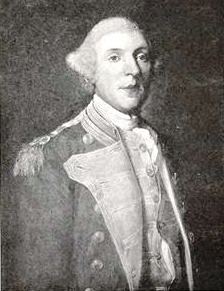 | ||
The Cape Sable Campaign occurred during the French and Indian War when Colonel Roger Morris led a force of 325 British soldiers, Captain Joseph Gorham led 60 rangers and Roger's Rangers to destroy the Acadian settlements in present-day Shelburne County and Yarmouth County, Nova Scotia, Canada, in the fall of 1758.
Contents
According to one historian, the level of Acadian suffering greatly increased in the late summer of 1758. Along with campaigns on Ile Saint-Jean, in the Gulf of St. Lawrence, at St. John River Campaign and the Petitcodiac River Campaign, the British targeted the Cape Sable region.
Historical context
The British Conquest of Acadia happened in 1710. Over the next forty-five years the Acadians refused to sign an unconditional oath of allegiance to Britain. During this time period Acadians participated in various militia operations against the British and maintained vital supply lines to the French Fortress of Louisbourg and Fort Beausejour. During the French and Indian War, the British sought to neutralize any military threat Acadians posed and to interrupt the vital supply lines Acadians provided to Louisbourg by deporting Acadians from Acadia.
The first wave of these deportations began in 1755 with the Bay of Fundy Campaign (1755). In April 1756, Major Jedidiah Preble and his New England troops, on their return to Boston, raided Pubnico and captured 72 men, women and children.
The Campaign
En route to the St. John River Campaign in September 1758, Moncton sent Major Roger Morris of the 35th Regiment, in command of two men-of-war and transport ships with 325 soldiers, to deport more Acadians. On September 16, Morris and Gorham went ashore and began to search. Not finding any Acadians, they began burning the farms on October 4. On October 9th they found father Jean-Baptiste de Gay Desenclaves (whose principle residence was Tusket) and 36 families (6 of which were Mi'kmaq) who were imprisoned in the local church. On October 28, Moncton's troops sent the women and children to Georges Island. The men were kept behind and forced to work with troops to destroy their village. On October 31, they were also sent to Halifax. About 130 Acadians and seven Mi'kmaq escaped.
In the spring of 1759, Major Erasmus James Philipps arranged for Joseph Gorham and his rangers to take prisoner 151 Acadians. They reached Georges Island with them on June 29 and were deported to Britain in November 1759. The remaining 100 Acadians and Mi'kmaq at Cape Sable fired upon Captain Silvanus Cobb in July 1759.
